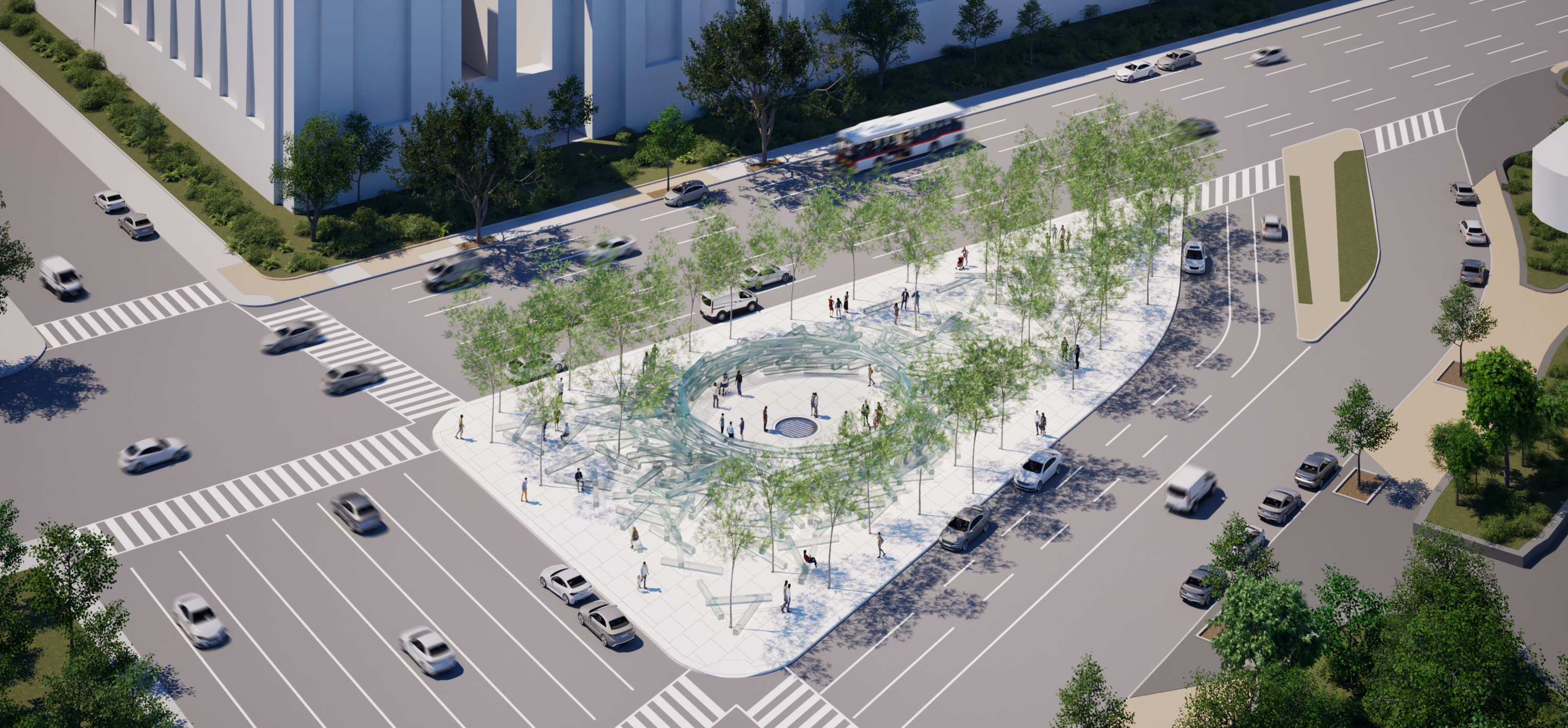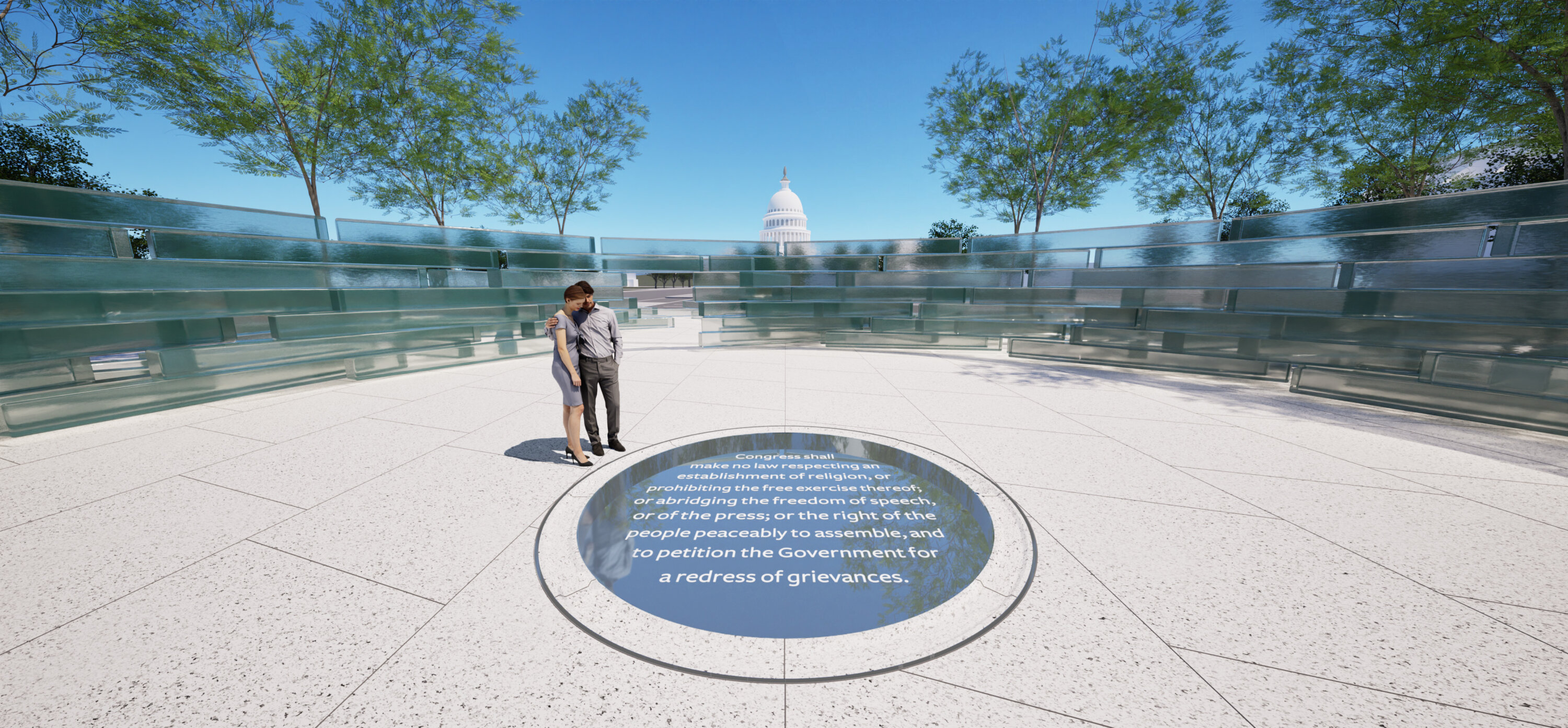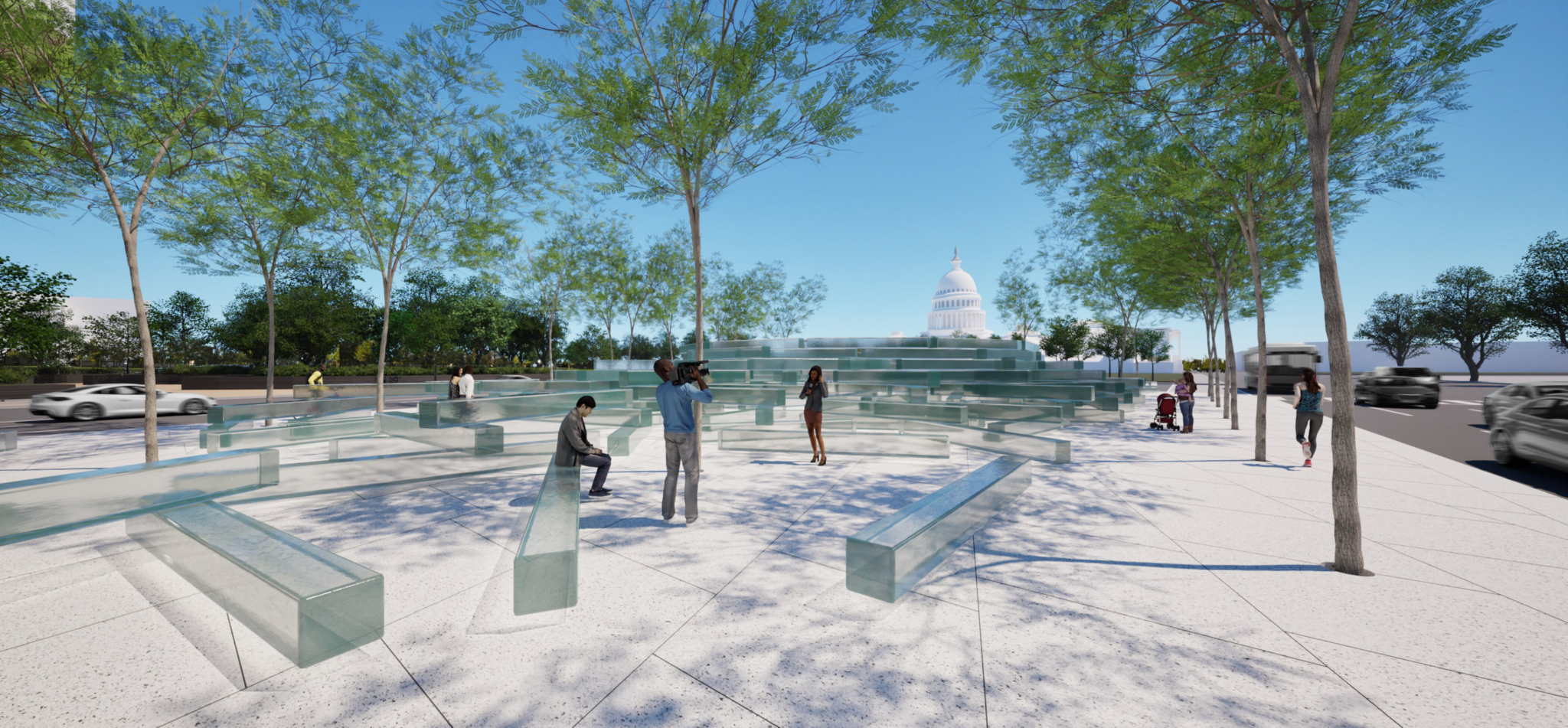On June 29, 2018, the editorial page of the Capital Gazette ran just 56 words, among them these: “Today, we are speechless. This page is intentionally left blank to commemorate victims of Thursday’s shooting at our office.”
The day prior in Annapolis, a gunman had stormed into the Capital Gazette building and gunned down five journalists. It was the deadliest attack on journalists in US history.
Six years have passed since the killing of Gerald Fischman, Rob Hiaasen, John McNamara, Rebecca Smith, and Wendi Winters. To commemorate these and other journalists who have lost their lives in service, a group of journalists, professors, activists, and others came together to spur construction of a memorial.
Today, the Fallen Journalists Memorial Foundation unveiled the first public images and the design concept for a memorial to be erected near the National Mall that will be “dedicated to press freedom and the journalists who have lost their lives in service to that cause,” according to a press release by the foundation. The site is at the intersection of Independence Avenue, Maryland Avenue, and 3rd Street, SW, between the National Museum of the American Indian and Voice of America.


“At a time when journalism is under threat around the world, this will serve in a very powerful way to remind people how important the press is as a pillar of democracy,” Barbara Cochran, president of the Fallen Journalists Memorial Foundation told Washingtonian. “This will also help take note and honor the sacrifices journalists have made in the name of press freedom.”
A massive structure composed of numerous separate glass elements will be the first memorial in the United States to be made entirely of glass. The strewn glass elements are meant to be haphazard, indicating disconnected data points that come together to form a story. The memorial will consist of 300 glass pieces, each handcrafted in a way to represent unique, personal stories of reporters.
“We started out with looking at ice cubes,” said John Ronan, the architect who will see the memorial from start to finish. “Journalism is about transparency and the memorial needed to take up the themes of transparency and light,” adds Ronan. The Chicago architect’s design was chosen by a ten-member selection committee led by Pulitzer Prize winning architecture critic Paul Goldberger.*
Ronan told Washingtonian that investigative journalists shed light on issues “obscured in darkness” and make “light of what is opaque,” something that propelled the theme of the memorial.
The memorial has no front or back; people will be able to enter from multiple entry points. All paths will lead to the “Remembrance Hall,” a circular area in the center of the site that Ronan said is meant signify “the numerous, non-linear paths a reporter takes to lead to the truth.” The Remembrance Hall is more orderly than the rest of the site, Ronan said, “implying the tail end of the storytelling process where the truth lies naked. Disorder yields to order here.” In the Remembrance Hall will also be a circular reflecting lens that has the First Amendment of the Constitution written on it.
Standing anywhere at the memorial, visitors will have a direct view of the US Capitol. After sunset, a soft light should emanate from the structure, meant to balance the light emitting from the dome of the US Capitol.

“This signifies the watchdog role journalists play in a democracy,” said Ronan. “The press never really sleeps.” Ronan emphasized that the space was “simultaneously a place of celebration of the First Amendment” but also served as a place of “reflection to think about those who sacrificed their lives in the pursuit of truth.”
David Dreier, former House Representative and past chairman of the Tribune Publishing Company, which owned the Capital Gazette, feared that the life and work of reporters would be just another bullet point in history books. Dreier founded the foundation on the one-year anniversary of the tragedy at the Gazette newsroom.
Cochran said that the funds raised for the memorial were all private contributions with no government money. “We got this far because of bipartisan support from Congress and we think it’s a powerful testament to the fact that freedom of the press is something that can be agreed on in a bipartisan way,” said Cochran.
Congress passed the Fallen Journalists Memorial Act in 2019, authorizing the construction of the memorial.
Some 44 reporters and media personnel have been killed this year through September 16, 2024, according to data collected by the Committee to Protect Journalists. In 2023, 78 reporters were killed, a major uptick from the 42 deaths in 2022 due to the on-going conflict in Israel and Gaza.
The foundation will have an on-going role of educating the public “about risks to a free press and the contributions of journalism as a pillar of democracy,” according to the foundation’s website.
The foundation awaits approval for the design concept from the US Commission of Fine Arts and the National Capital Planning Commission, among others, and says it should be able to start construction in 2026 and formally dedicate the memorial in 2028.
* An earlier version of this article incorrectly stated that the design was chosen by Paul Goldberger.


















